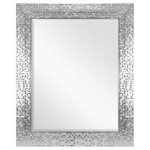How to Screen Mirror Your Apple iPhone to a Samsung TV
Screen mirroring allows users to wirelessly project the display of their mobile devices onto a larger screen, such as a television. This functionality proves useful for various purposes, including viewing photos and videos, delivering presentations, or simply enjoying content from a mobile device on a larger display. While both Apple and Samsung devices are prevalent, their operating systems and native connectivity protocols differ, requiring users to employ specific methods to achieve seamless screen mirroring between an iPhone and a Samsung TV.
This article provides a comprehensive guide on how to screen mirror an Apple iPhone to a Samsung TV. It explores the various methods available, outlining their respective advantages and disadvantages, and providing step-by-step instructions for each process. The focus remains on achieving a reliable and high-quality screen mirroring experience between these two popular device ecosystems.
Understanding the Underlying Technologies
Before delving into the specific methods, it's important to understand the technologies that facilitate screen mirroring. Apple devices utilize AirPlay, a proprietary wireless streaming protocol developed by Apple. AirPlay allows users to stream audio and video content from Apple devices to other AirPlay-compatible devices, such as Apple TVs, HomePods, and select smart TVs. Samsung TVs, while not natively supporting AirPlay for older models, often support other screen mirroring protocols like Miracast, a widely adopted wireless display standard.
The compatibility differences between AirPlay and Miracast necessitate the use of intermediary methods or third-party applications to bridge the gap and enable screen mirroring between an iPhone and a Samsung TV. The following sections will explore these methods in detail.
Method 1: Using AirPlay 2 (for Compatible Samsung TVs)
The simplest and most direct method for screen mirroring an iPhone to a Samsung TV involves using AirPlay 2. Apple's AirPlay 2 technology allows seamless streaming of content from Apple devices to compatible smart TVs, without the need for additional hardware or software. A crucial point to emphasize is that not all Samsung TVs support AirPlay 2. Check your Samsung TV model specifications to confirm AirPlay 2 compatibility.
To determine if your Samsung TV supports AirPlay 2, navigate to the TV's settings menu and search for "AirPlay". If the setting is present, your TV is compatible. Alternatively, consult the TV's user manual or the manufacturer's website for confirmation.
Assuming your Samsung TV supports AirPlay 2, follow these steps:
- Ensure that both your iPhone and Samsung TV are connected to the same Wi-Fi network. This is crucial for establishing a stable and reliable connection.
- On your iPhone, open the Control Center. You can typically access the Control Center by swiping down from the top-right corner of the screen (on iPhones with Face ID) or swiping up from the bottom of the screen (on iPhones with a Home button).
- In the Control Center, tap the "Screen Mirroring" icon. The icon resembles two overlapping rectangles.
- A list of available AirPlay devices will appear. Select your Samsung TV from the list. Note that the TV's name usually appears as it is configured in the TV's settings.
- If prompted, enter the AirPlay passcode displayed on your Samsung TV screen on your iPhone. This passcode is a security measure to prevent unauthorized screen mirroring.
- Once the connection is established, your iPhone's screen will be mirrored on your Samsung TV.
To stop screen mirroring, repeat steps 2 and 3, and then select "Stop Mirroring" from the list of devices.
AirPlay 2 offers several advantages, including ease of use, high-quality streaming, and low latency. However, its primary limitation is its dependence on AirPlay 2 compatibility, which is not available on all Samsung TV models.
Method 2: Using Third-Party Screen Mirroring Applications
For Samsung TVs that do not support AirPlay 2, or for users seeking more advanced features, third-party screen mirroring applications provide an alternative solution. These applications bridge the compatibility gap by offering a software-based screen mirroring solution that works across different device platforms.
Several screen mirroring applications are available on the App Store, including "AirBeamTV," "Replica," and "Screen Mirroring App". These applications typically require installation on both the iPhone and, in some cases, a receiver application on the Samsung TV (though most modern Samsung TVs have built-in support for common protocols). The precise installation and configuration process varies depending on the specific application being used.
Here's a general outline of the steps involved in using a third-party screen mirroring application:
- Download and install the screen mirroring application on your iPhone.
- Check on your Samsung TV if the screen mirroring application is already pre-installed. If not, install the application from the Samsung App Store. Some apps may require a separate receiver app on the TV.
- Ensure that both your iPhone and Samsung TV are connected to the same Wi-Fi network.
- Launch the screen mirroring application on both your iPhone and your Samsung TV.
- Follow the application's instructions to connect your iPhone to your Samsung TV. This typically involves selecting your TV from a list of available devices and entering a pairing code.
- Once the connection is established, your iPhone's screen will be mirrored on your Samsung TV.
Third-party screen mirroring applications can offer a wider range of features compared to AirPlay 2, such as adjustable resolution, frame rate, and bit rate. Some applications also support screen recording and remote control functionality. However, it's essential to choose a reputable application from a trusted developer, as some applications may contain malware or compromise user privacy. Furthermore, the performance and stability of third-party screen mirroring applications can vary depending on the application itself, the network conditions, and the processing power of the devices involved.
Method 3: Using an HDMI Adapter
While wireless screen mirroring offers convenience, it can sometimes be susceptible to network issues and latency. For users prioritizing a stable and reliable connection, using an HDMI adapter provides a wired screen mirroring solution. This method involves physically connecting your iPhone to your Samsung TV using an HDMI cable and an appropriate adapter.
To use this method, you will need the following:
- A Lightning to HDMI adapter (for iPhones with Lightning ports) or a USB-C to HDMI adapter (for iPhones with USB-C ports).
- An HDMI cable.
Follow these steps to connect your iPhone to your Samsung TV using an HDMI adapter:
- Plug one end of the HDMI cable into the HDMI port on your Samsung TV.
- Plug the other end of the HDMI cable into the HDMI adapter.
- Connect the Lightning or USB-C end of the adapter to your iPhone.
- Turn on your Samsung TV and select the correct HDMI input source that corresponds to the HDMI port you connected the cable to.
- Your iPhone's screen should now be mirrored on your Samsung TV.
Using an HDMI adapter offers several advantages, including a stable and reliable connection, minimal latency, and high-quality video output. However, this method is less convenient than wireless screen mirroring, as it requires a physical connection and limits the mobility of your iPhone. Furthermore, the cost of the HDMI adapter may be a factor for some users.
Troubleshooting Common Screen Mirroring Issues
While screen mirroring is generally a straightforward process, users may occasionally encounter issues. Here are some common troubleshooting tips:
- Ensure that both your iPhone and Samsung TV are connected to the same Wi-Fi network. This is the most common cause of screen mirroring problems.
- Check your Wi-Fi network speed and stability. A slow or unstable Wi-Fi connection can cause buffering, lag, and disconnections.
- Restart your iPhone and your Samsung TV. This can often resolve temporary glitches or software conflicts.
- Update your iPhone and Samsung TV to the latest software versions. Software updates often include bug fixes and performance improvements that can enhance screen mirroring functionality.
- Close any unnecessary applications on your iPhone and Samsung TV. Running too many applications simultaneously can strain the devices' resources and impact screen mirroring performance.
- Move your iPhone and Samsung TV closer to your Wi-Fi router. This can improve the signal strength and reduce interference.
- Disable Bluetooth on your iPhone. In some cases, Bluetooth interference can interfere with Wi-Fi connectivity and affect screen mirroring performance.
- Contact Apple or Samsung support for further assistance. If you have exhausted all other troubleshooting steps, contacting the manufacturer's support team may be necessary.
By understanding the underlying technologies, exploring the available methods, and following the troubleshooting tips outlined in this article, users can successfully screen mirror their Apple iPhones to Samsung TVs and enjoy their mobile content on a larger screen.

How To Connect Phone Tv Screen Mirror Iphone A Samsung Easy Setup

How To Stream From An Iphone Using Airplay 2

How To Stream From An Iphone Using Airplay 2

Screen Mirroring To Your Samsung Tv

Now You Can Stream Iphone To Samsung Smart Tvs Without Airplay Updated Apple Must

4 Easy Ways To Mirror Iphone Samsung Tv For Free

How To Stream From An Iphone Using Airplay 2

Effective How To Mirror Iphone Samsung Tv Airdroid

Die Besten Wege Wie Man Iphone 11 Auf Samsung Tv Spiegeln Kann

How To Mirror An Ipad A Samsung Tv








